As federal funding for the arts becomes increasingly scarce, schools look for other ways to pay for their programs.
By Marc Hopkins
The 1980s motion picture Fame follows a group of aspiring artists at a New York City high school for the performing arts. The film’s climax features an elaborate musical performance, “I Sing the Body Electric,” which employs solo and group vocalists, a full orchestra, a band and dancers. In the movie, this concert coincides with graduation and showcases the maturation of the students’ talents.
In 2013, the Philadelphia High School for the Creative and Performing Arts (CAPA) canceled its annual musical because of school-district cutbacks. Like its fictitious counterpart in Fame, the CAPA musical also traditionally brought the performance disciplines together. It had been a rite of passage throughout the school’s more-than-35-year history.
The show’s cancellation also sidelined students engaged in other aspects of production, such as visual arts, costume design, lighting and staging. “They try to put on the most professional show possible. It used to be a line item, and it has been eliminated over the years,” says Terrilyn McCormick, president of the CAPA Foundation, which acts as a fundraising organization and advocate for the school.
The Philadelphia School District’s so-called doomsday budget—which went into effect because of the paucity of state funding—left CAPA with a $1.1 million budget gap that has cut 19 teachers and staff members since 2012. This loss is a crucial one for CAPA, which has a history of producing top-tier artists, such as R&B crooners Boyz II Men and Amel Larrieux, as well as jazz bassist Christian McBride and organist-trumpeter-vocalist Joey DeFrancesco. The staff reductions jeopardize the instruction and nurturing the students need to become the next generation of great artists.
These days, theater majors can’t learn to sing, and dancers can’t take guitar lessons because there are too few teachers to meet those needs. “A lot of kids are really focused on their career and want to be that triple threat,” McCormick says. “They want to dance, sing and act, and that really hasn’t been on the table for them in the last couple of years.”
The experience at CAPA isn’t unique. Funding for arts education has become a casualty of cash-strapped school districts across the country as they struggle to cover basics such as math and science. In recent years, Los Angeles, Washington and Chicago have all made steep cuts to arts education.
In mid-January, the National Endowment for the Arts (NEA) published three reports based on data from 2012, the most recent available, which describe how the public consumes various forms of artistic expression. One of the key findings is that the supply of arts education has been in decline for more than a decade, says Sunil Iyengar, NEA’s director of research and analysis.
“That is worrisome because we know that arts education is a significant predictor of many positive individual social outcomes,” he says. The data shows that about 60 percent of arts-education services come from primary and secondary education, with the remainder from colleges and universities. Iyengar says that the continuing erosion of such services will likely disenfranchise generations of people from participating in what he calls the nation’s “creative economy,” which includes all of those who engage in the commerce of art. The NEA estimates that art contributed nearly $700 billion to the U.S. economy in 2012.
In the absence of public funding, schools have created sophisticated fundraising arms to restore and retain teachers; to cover program essentials, such as new instruments and art supplies; and to recruit instructors from outside the schools. For CAPA, that effort is in the early stages and has help from two of the school’s more famous alums, Ahmir “Questlove” Thompson and Tariq “Black Thought” Trotter, who front the famed hip-hop group The Roots, which also acts as the house band for NBC’s The Tonight Show starring Jimmy Fallon.
The Roots kicked in $40,000 to help start the CAPA Foundation, which seeks to raise $500,000 a year for the next two years and $1 million a year thereafter. On the school’s website, McCormick makes an impassioned plea to “heal the cuts” and enable the foundation to raise enough to bring back teachers and cover the cost of supplies and extracurricular activities. There will be a musical this year; the students are gearing up for Pippin, thanks to an additional $10,000-a-year pledge by The Roots to keep the show going.
McCormick initially got involved because her son, Cy Wolfe, is a theater major at the school. But she realizes that the foundation will have a better chance of succeeding if it doesn’t have to rely on parents who disengage when their children graduate. She’s taking steps to pull in community groups, corporations and figures in higher education. McCormick concedes it’s a tough job, but she’s up for it. At the same time, when she first sent her kids to the school, she never imagined that she would end up being an institution builder. Unfortunately, in Philadelphia right now, she says, some schools are doing better than others, and that improvement is the result of “parents and community [who] have said, ‘This matters, and I will do everything I can to protect it,’ ” McCormick says.
Last March, Sting, with special guest Paul Simon, took the stage at The Music Center at Strathmore, a performance venue just outside the nation’s capital in Bethesda, Maryland. The concert was linked to a yearly fundraising event for the Duke Ellington School of the Arts in Washington’s Georgetown neighborhood. The event, the Performance Series of Legends, made an unprecedented $1.2 million, according to Grace Hong, chief development officer of The Ellington Fund.
The show usually averages a return of $500,000. “Last year, we jacked up the prices and took advantage of it,” Hong says, laughing. Tickets for the show ranged from $250 to $750. Those who spent $1,000 noshed on hors-d’oeuvres with Sting at a VIP reception.
The prices might give most sticker shock, but Hong isn’t greedy. She’s protecting a program that would be unfeasible unless The Ellington Fund kept an aggressive pace. “We’d be running in the red [without additional funds],” Hong says. “I don’t know if we’d ultimately close the doors, but it takes a lot more to run the arts program than what we get from DCPS [District of Columbia Public School System].
“I’m not pooh-poohing DCPS,” she says. “They’re our biggest donor, but their allocation to the school has stayed flat or declined as the need for our program has continued to grow.”
Currently, the school system budgets $6.5 million for the school, and the fund raises $1.5 million to $2 million a year on average.
The Ellington School and its fund both started in 1974, and, since then, the fund has shrewdly matched the passions of donors to the needs of the program. For instance, former District of Columbia Mayor Anthony A. Williams established a $17 million endowment in 2011 and a $1 million endowment last year for an opera prize in memory of his mother, Virginia Williams, who died in 2014.
In late January, Hong was busy securing the next artist for the concert series as it enters its eighth year. The event has previously featured Patti LaBelle, Smokey Robinson, Stevie Wonder, Earth, Wind & Fire, Denyce Graves and Dave Chapelle.
In Baltimore, about a mile from the Inner Harbor, the Baltimore School for the Arts (BSA) is preparing to launch an event to keep the art flowing. The BSA Foundation has started sending invitations to Expressions, a three-day event in March that kicks off with a gala that features art classes for attendees and performances by the school’s students.
Last year, Lawrence “Larry” Gilliard, Jr., hosted the event. Alumnus Gilliard is widely known for his role as D’Angelo Barksdale on the HBO’s “The Wire.” Grammy award-winning jazz saxophonist Mark Gross joined Gilliard in hosting the event. The affair usually raises as much as $500,000, says Carter Arnot Polakoff, foundation and development director for the school’s fundraising arm. “It’s become one of the premiere events in Baltimore, and, without it, the school couldn’t operate at [its] current level.”
Baltimore’s school district covers 70 percent of the school’s operating budget, and the foundation’s efforts cover the remainder, which averages $1.3 million annually. This extra cash gives the students access to master teachers and artists from the community. “We can hire the oboe player from the symphony who can come in and teach a private class,” says Polakoff. “Students are able to see that their teachers are practicing artists and making a living doing their art. It’s an experience that you just can’t replicate.”
The school and its foundation were established in 1980 and fundraising efforts have evolved with the needs of the arts program. But with the advent of charter schools, which are vying for the same donor pool, the foundation will have to broaden its approach, says Polakoff. In the past, donations flowed more easily from community members and local companies, but parents are learning about the need for their participation in raising money.
“We were the only school that was doing private fundraising for many years,” says Polakoff. “Now, charter schools are everywhere, and it completely changed the climate.”
The Monarch School, a kindergarten through Grade 12 school in San Diego, has more than 300 students, many of whom are affected by homelessness. On a recent afternoon, Andrew J. Schlegel, director of programs and partnerships at the school, was stirred from his office by the soul-funk vibrations of “Say It Loud—I’m Black and I’m Proud.” He had to investigate. Upon entering a third-grade class, Schlegel was struck by the students’ enthusiasm during a hip-hop yoga session.
“I watched 22 third graders, all engaged in unison, dancing and doing yoga poses to James Brown,” he says. But Schlegel became focused on a student who usually has a hard time staying on task and has a habit of getting into fights with his peers. “It’s because he has a lot of trauma in his background, and, while I was looking at that student, it was as if he didn’t have any of those challenges,” he says. Schlegel attributes that student’s and others’ improvements in social and emotional well-being to participation in the school’s expansive arts program.
He explains that, when kids first arrive at Monarch they have a hard time adjusting because of their life experiences and gaps in education. When they get the chance to embrace an artistic endeavor, however, the school provides a healing and calming effect.
“We’ve seen that kids who are very reactive and have severe challenges with their behavior will slowly become part of the culture of the class that’s guiding the kids in the direction of their teacher,” Schlegel says.
Monarch sits just south of the city’s downtown, not far from Petco Park, home of the San Diego Padres. The school uses a mix of outside partners and staff, providing students with a range of experiences that include music, media, dance instruction and painting. The school has an on-staff expressive-arts therapist who uses an array of techniques to help kids work through their problems.
Most of the art program wouldn’t be possible without the Monarch School Project. The outfit raises more than $2 million a year. Outside partnerships also buttress the program. For example, the Sonima Foundation provides health-and-wellness instructors, who teach the third-grade dance class. Sonima also teaches classes in using oral poetry to develop character.
The school made another key partnership with a local branch of financial giant UBS, which recently concluded a class on commoditizing art. The instructors had students put designs on sweatshirts, pillows and mugs. The kids learned what it costs to etch their work onto items and how to price them to make a profit. Their final test was to sell their wares at the giant Art San Diego show in November.
Schools once fundraised for extras. Now, they chase dollars for survival so they can continue to enrich the lives of students who need them. Arts educators touch students who might otherwise never have been exposed to dance as healing or music as expression or painting as a career. Thanks to these educators, young people have advocates who invest hope—through the stroke of a paintbrush—into their lives. The constant chase for dollars seems like a fragile arrangement for our young and promising artists. It brings up a troubling question: What would become of them or their schools if the money dried up?



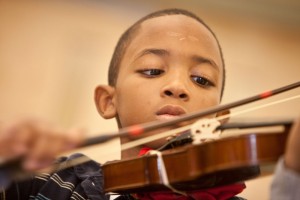
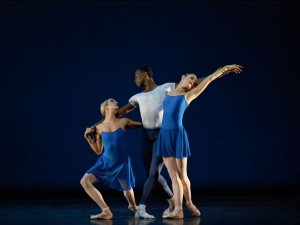

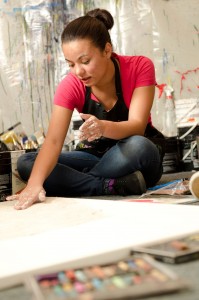
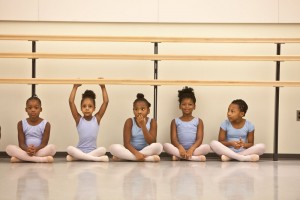

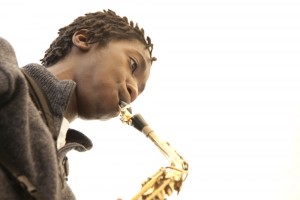




NO COMMENT